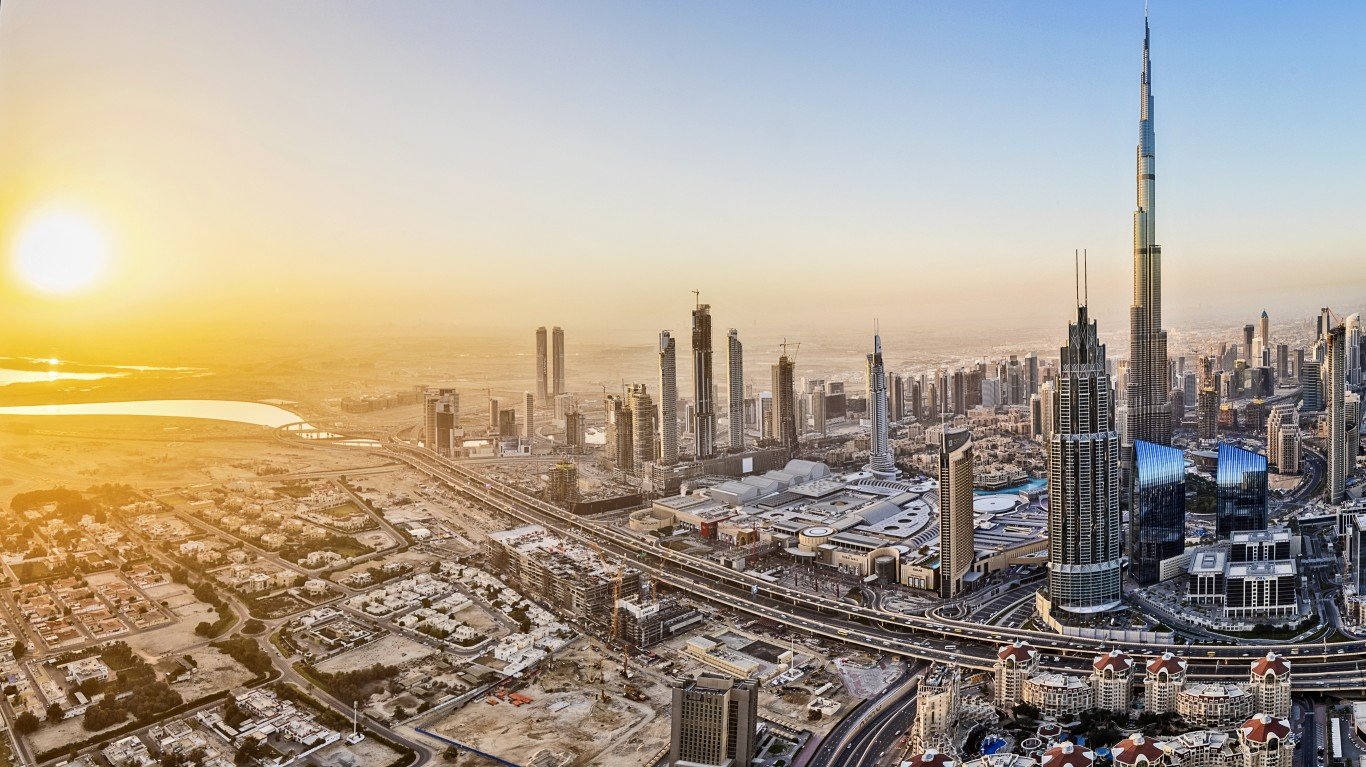
15. United Arab Emirates
> PM2.5 concentration: 36.0 μg/m³
> Total population 2020: 9,890,400
Like its neighbors, air quality in the United Arab Emirates is caused partly by strong seasonal winds that blow across the Arabian Peninsula, causing dust storms in the desert climate. But vehicle and industrial emissions, especially ones linked to oil and gas production and refining, make matters far worse.
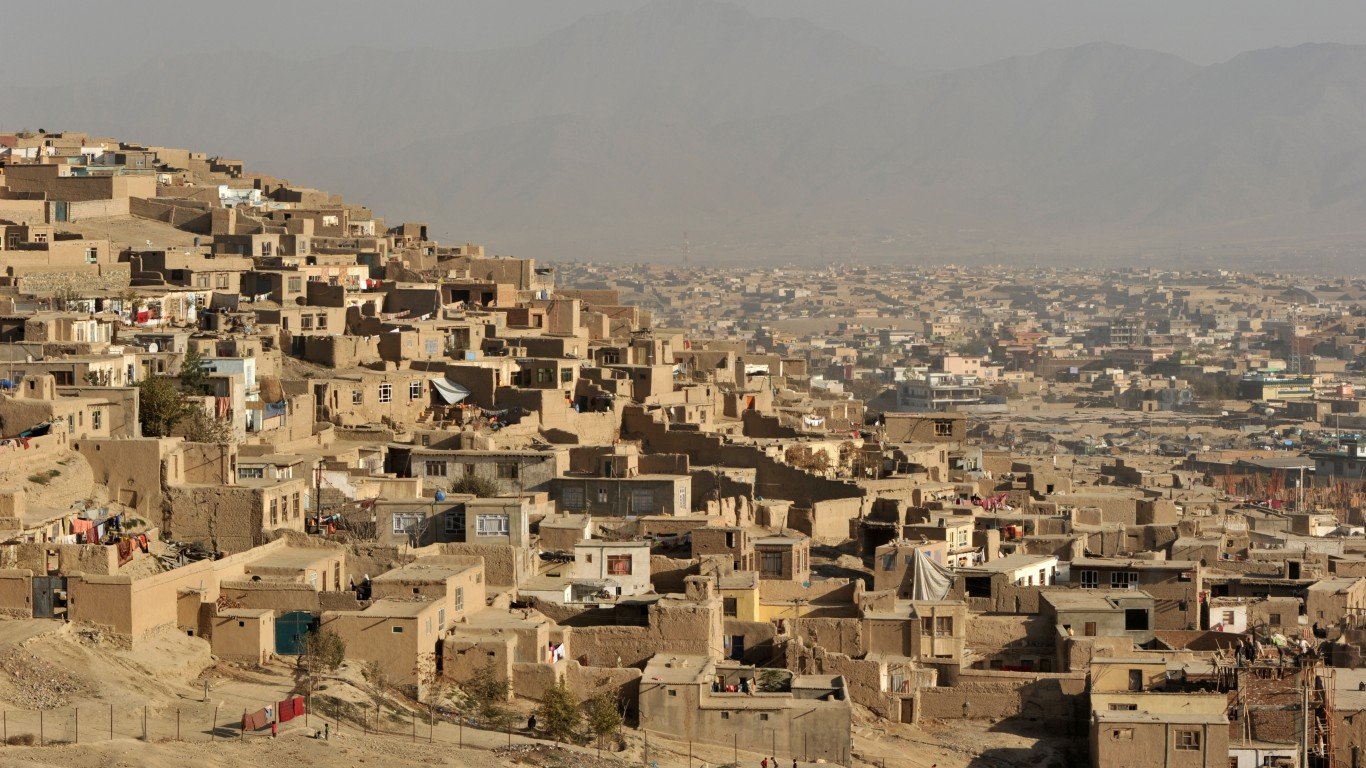
14. Afghanistan
> PM2.5 concentration: 37.5 μg/m³
> Total population 2020: 38,928,341
One of the world’s poorest, least developed, and conflict-ravaged countries is also suffering from a rise in urban air pollution. A primary cause of airborne microparticles is the widespread domestic use of wood and coal for cooking and heat. Dirtier, low-quality fuel upon which Afghans depend exacerbates the air pollution problem.
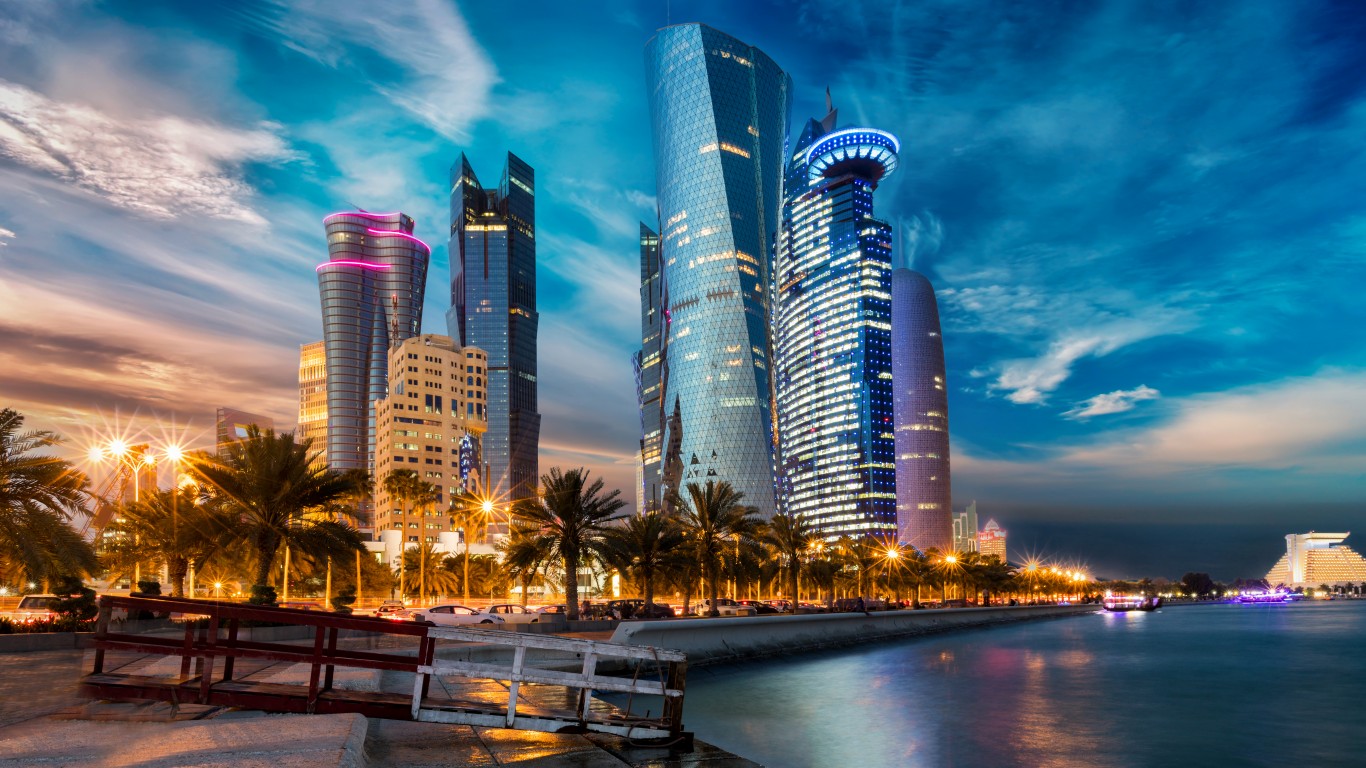
13. Qatar
> PM2.5 concentration: 38.2 μg/m³
> Total population 2020: 2,881,060
As with other Gulf countries, Qatar’s air quality worsens during periods of seasonal high winds in its arid climate. Further helping push up PM2.5 readings year-round are motor vehicle and industrial emissions. Last year, local officials announced efforts to boost air quality monitoring ahead of the FIFA 2022 World Cup that kicks off in November.
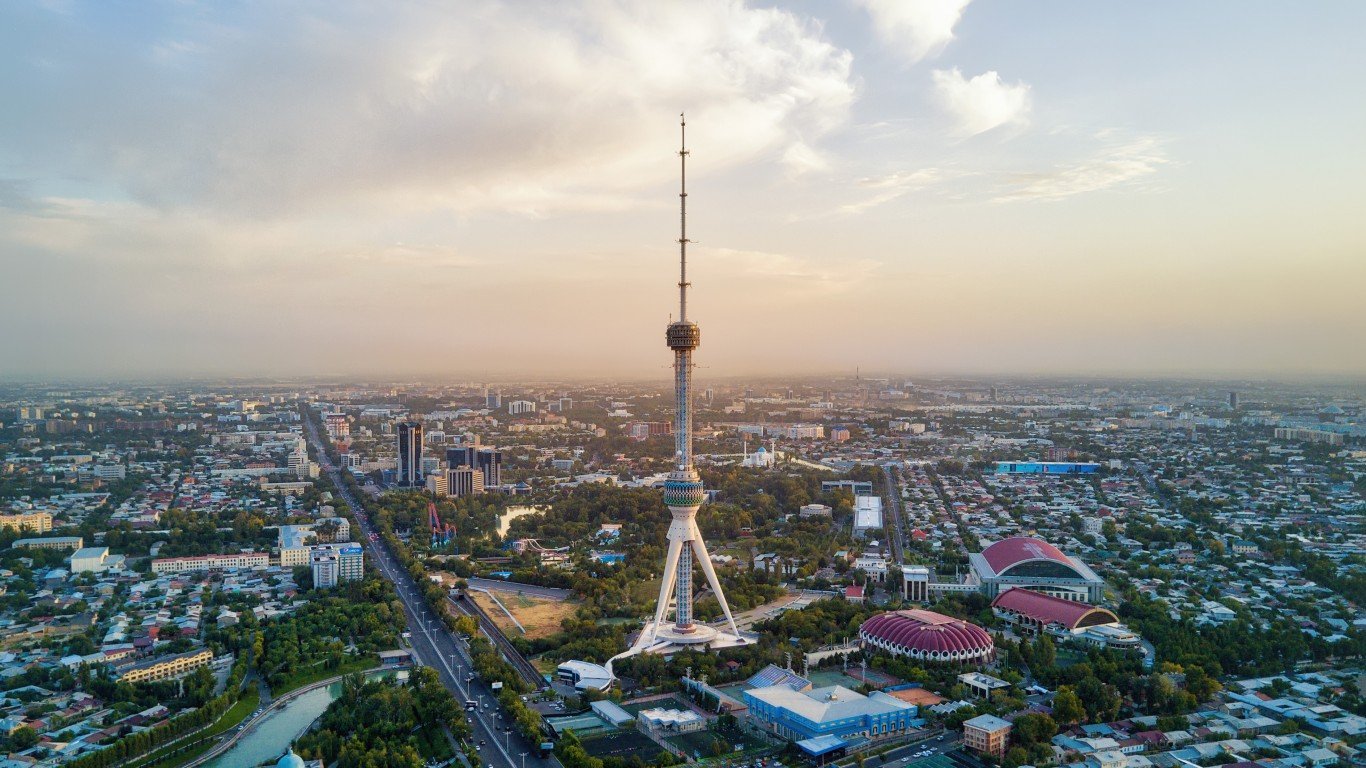
12. Uzbekistan
> PM2.5 concentration: 42.8 μg/m³
> Total population 2020: 34,232,050
Uzbekistan is one of four Central Asian countries on this list. The oil and gas and mining industries contribute to the country’s poor urban air quality, as do widespread burning of residential waste.
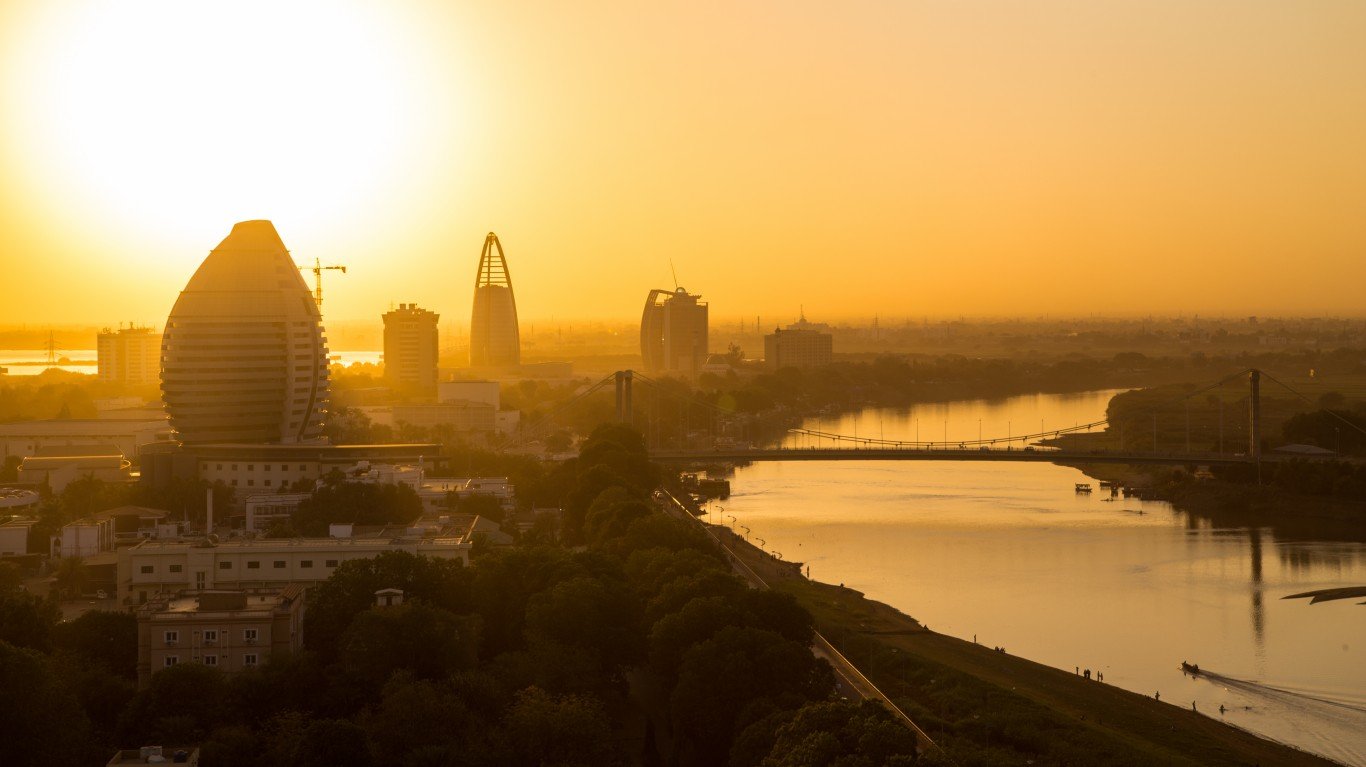
11. Sudan
> PM2.5 concentration: 44.1 μg/m³
> Total population 2020: 43,849,269
The biggest contributors to Sudan’s air pollution problems are the oil and cement industries, motor vehicle emissions, and widespread domestic waste burning due to inadequate waste management infrastructure.

 24/7 Tempo
24/7 Tempo




